Aedes aegypti, the mosquito that spreads Dengue fever.
THE FACT: There is no vaccine to prevent Dengue
Dengue is diagnosed only by a blood test.
OVERVIEW
Dengue fever is an infectious disease carried by mosquitoes and caused by any of four related dengue viruses. This disease used to be called “break-bone” fever because it sometimes causes severe joint and muscle pain that feels like bones are breaking, hence the name. Health experts have known about dengue fever for more than 200 years.
Worldwide, more than 100 million cases of dengue infection occur each year.
CAUSE
Dengue fever can be caused by any one of four types of dengue virus: DEN-1, DEN-2, DEN-3, and DEN-4. You can be infected by at least two, if not all four types at different times during your lifetime, but only once by the same type.
TRANSMISSION
You can get dengue virus infections from the bite of an infected Aedes mosquito. Mosquitoes become infected when they bite infected humans, and later transmit infection to other people they bite. Two main species of mosquito, Aedes aegypti and Aedes albopictus, have been responsible for all cases of dengue transmitted in this country. Dengue is not contagious from person to person.
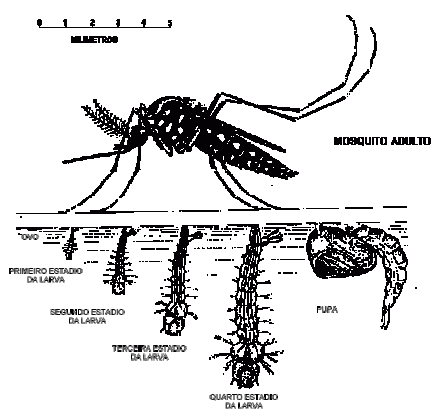
SYMPTOMS
Symptoms of typical uncomplicated (classic) dengue usually start with fever within 5 to 6 days after you have been bitten by an infected mosquito and include
- High fever, up to 105 degrees Fahrenheit
- Severe headache
- Retro-orbital (behind the eye) pain
- Severe joint and muscle pain
- Nausea and vomiting
- Rash
The rash may appear over most of your body 3 to 4 days after the fever begins. You may get a second rash later in the disease.
Symptoms of dengue hemorrhagic fever include all of the symptoms of classic dengue plus
- Marked damage to blood and lymph vessels
- Bleeding from the nose, gums, or under the skin, causing purplish bruises
This form of dengue disease can cause death.
Symptoms of dengue shock syndrome-the most severe form of dengue disease-include all of the symptoms of classic dengue and dengue hemorrhagic fever, plus
- Fluids leaking outside of blood vessels
- Massive bleeding
- Shock (very low blood pressure)
This form of the disease usually occurs in children (sometimes adults) experiencing their second dengue infection. It is sometimes fatal, especially in children and young adults.
DIAGNOSIS
Your health care provider can diagnose dengue fever by doing two blood tests, 2 to 3 weeks apart. The tests can show whether a sample of your blood contains antibodies to the virus. In epidemics, a health care provider often can diagnose dengue by typical signs and symptoms.
TREATMENT
There is no specific treatment for classic dengue fever, and like most people you will recover completely within 2 weeks. To help with recovery, health care experts recommend
- Getting plenty of bed rest
- Drinking lots of fluids
- Taking medicine to reduce fever
CDC advises people with dengue fever not to take aspirin. Acetaminophen or other over-the-counter pain-reducing medicines are safe for most people.
For severe dengue symptoms, including shock and coma, early and aggressive emergency treatment with fluid and electrolyte replacement can be lifesaving.
PREVENTION
The best way to prevent dengue fever is to take special precautions to avoid contact with mosquitoes. Several dengue vaccines are being developed, but none is likely to be licensed by the Food and Drug Administration in the next few years.
When outdoors in an area where dengue fever has been found
- Use a mosquito repellant containing DEET, picaridin, or oil of lemon eucalyptus
- Dress in protective clothing-long-sleeved shirts, long pants, socks, and shoes
Because Aedes mosquitoes usually bite during the day, be sure to use precautions especially during early morning hours before daybreak and in the late afternoon before dark.
Other precautions include
- Keeping unscreened windows and doors closed
- Keeping window and door screens repaired
- Getting rid of areas where mosquitoes breed, such as standing water in flower pots, containers, birdbaths, discarded tires, etc.

COMPLICATIONS
Most people who develop dengue fever recover completely within 2 weeks. Some, however, may go through several weeks to months of feeling tired and/or depressed.
Some more facts: FAQ’s
Dengue
·Dengue [DEN-ghee] is a flu-like viral disease spread by the bite of infected mosquitoes. Dengue hemorrhagic fever is a severe, often fatal, complication of dengue.
·Dengue occurs in most tropical areas of the world. Most U.S. cases occur in travelers returning from abroad, but the Dengue risk is increasing for persons living along the Texas-Mexico border and in other parts of the southern United States.
·There is no specific treatment for Dengue.
·Prevention centers on avoiding mosquito bites in areas where Dengue occurs or might occur and eliminating breeding sites.
What is Dengue fever? What is Dengue hemorrhagic fever?
Dengue fever is a flu-like illness spread by the bite of an infected mosquito.
Dengue hemorrhagic fever is a severe, often fatal, complication of Dengue fever.
What is the infectious agent that causes Dengue?
Dengue and Dengue hemorrhagic fever are caused by any of the Dengue family of viruses. Infection with one virus does not protect a person against infection with another.
How is Dengue spread?
Dengue is spread by the bite of an Aedes mosquito. The mosquito transmits the disease by biting an infected person and then biting someone else.
Where is Dengue found?
Dengue viruses occur in most tropical areas of the world. Dengue is common in Africa, Asia, the Pacific, Australia, and the Americas. It is widespread in the Caribbean basin. Dengue is most common in cities but can be found in rural areas. It is rarely found in mountainous areas above 4,000 feet.
The mosquitoes that transmit Dengue live among humans and breed in discarded tires, flower pots, old oil drums, and water storage containers close to human dwellings. Unlike the mosquitoes that cause malaria, Dengue mosquitoes bite during the day.
What are the signs and symptoms of Dengue fever and dengue hemorrhagic fever?
Dengue fever usually starts suddenly with a high fever, rash, severe headache, pain behind the eyes, and muscle and joint pain. The severity of the joint pain has given dengue the name “breakbone fever.” Nausea, vomiting, and loss of appetite are common. A rash usually appears 3 to 4 days after the start of the fever. The illness can last up to 10 days, but complete recovery can take as long as a month. Older children and adults are usually sicker than young children.
Most Dengue infections result in relatively mild illness, but some can progress to Dengue hemorrhagic fever. With Dengue hemorrhagic fever, the blood vessels start to leak and cause bleeding from the nose, mouth, and gums. Bruising can be a sign of bleeding inside the body. Without prompt treatment, the blood vessels can collapse, causing shock (Dengue shock syndrome). Dengue hemorrhagic fever is fatal in about 5 percent of cases, mostly among children and young adults.
How soon after exposure do symptoms appear?
The time between the bite of a mosquito carrying Dengue virus and the start of symptoms averages 4 to 6 days, with a range of 3 to 14 days. An infected person cannot spread the infection to other persons but can be a source of Dengue virus for mosquitoes for about 6 days.
How is Dengue diagnosed?
Dengue is diagnosed by a blood test.
Who is at risk for Dengue?
Anyone who is bitten by an infected mosquito can get Dengue fever. Risk factors for Dengue hemorrhagic fever include a person’s age and immune status, as well as the type of infecting virus. Persons who were previously infected with one or more types of Dengue virus are thought to be at greater risk for developing Dengue hemorrhagic fever if infected again.
What is the treatment for Dengue and Dengue hemorrhagic fever?
There is no specific treatment for Dengue. Persons with Dengue fever should rest and drink plenty of fluids. They should be kept away from mosquitoes for the protection of others. Dengue hemorrhagic fever is treated by replacing lost fluids. Some patients need transfusions to control bleeding.
How common is Dengue?
In tropical countries around the world, Dengue is one of the most common viral diseases spread to humans by mosquitoes. Tens of millions of cases of Dengue fever and up to hundreds of thousands of cases of Dengue hemorrhagic fever occur each year.
In the United States, approximately 100 cases of Dengue are reported each year in travelers returning from tropical areas. Many more cases probably go unreported. A few persons have become infected with Dengue while living in the United States. Aedes mosquitoes are found in Texas, Florida, and other southern states, and locally acquired dengue has been reported three times since 1980 in southern Texas.
Is Dengue an emerging infectious disease?
Yes. All types of Dengue virus are re-emerging worldwide and causing larger and more frequent epidemics, especially in cities in the tropics. The emergence of Dengue as a major public health problem has been most dramatic in the western hemisphere. Dengue fever has reached epidemic levels in Central America and is threatening the United States.
Several factors are contributing to the resurgence of Dengue fever:
·No effective mosquito control efforts are underway in most countries with Dengue.
·Public health systems to detect and control epidemics are deteriorating around the world.
·Rapid growth of cities in tropical countries has led to overcrowding, urban decay, and substandard sanitation, allowing more mosquitoes to live closer to more people.
·The increase in non-biodegradable plastic packaging and discarded tires is creating new breeding sites for mosquitoes.
·Increased jet air travel is helping people infected with Dengue viruses to move easily from city to city.
Dengue hemorrhagic fever is also on the rise. Persons who have been infected with one or more forms of Dengue virus are at greater risk for the more severe disease. With the increase in all types of virus, the occurrence of Dengue hemorrhagic fever becomes more likely.
To summarize, dengue is a rapidly expanding disease problem. Epidemics worldwide have become larger and more frequent. Incidence of the severe and fatal form of disease, DHF, has increased dramatically in Asia in recent years and has moved into the developed countries as well. Two factors are primarily responsible for this change in epidemiology: increased air travel and a total lack of effective mosquito control in tropical urban centers.
The only option we have to prevent the dengue problem from becoming progressively worse is to reduce incidence of disease, and the only way to achieve that is to control Ae. aegypti. Unfortunately, the conventional methods that have been used over the past 20 years are not very effective. Thus, we have a very real crisis on our hands.
New leaders are urgently required. Moreover, we must educate health planners, most of whom have little or no knowledge of or interest in vector-borne diseases other than malaria, but who determine where and on what diseases the health dollars are to be spent.
History has taught us that the “top down” approach to Ae. aegypti control has no lasting impact after government support is withdrawn. The “bottom up” approach, on the other hand, is very slow and may take years before results are observed. It is my opinion, therefore, that neither a “top down” nor a “bottom up” approach alone is ideal for controlling Ae. aegypti-borne diseases in the 2000s. What we urgently need today are integrated control strategies that utilize the best of both approaches in the initial phase, with more emphasis directed to the community-based approach as the program progresses. This should insure relatively rapid success, but also that the programs will be sustainable, and that the next generation will understand and, hopefully, accept its responsibility to help maintain Ae. aegypti control in the community. Citizens of each community must be given more responsibility for their own health destiny.
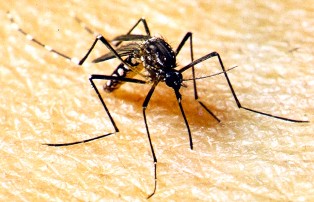
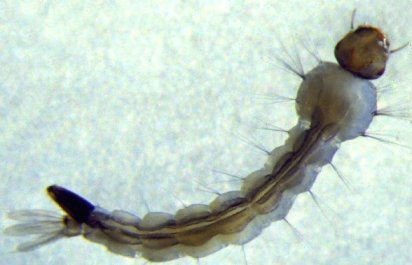
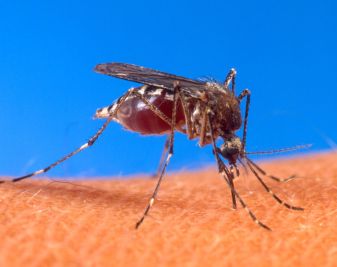
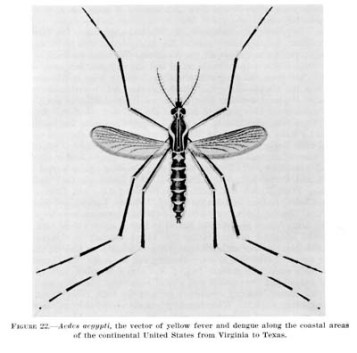
dengue fever is always deadly if not treated early.`
Latest post produced by our personal website
http://www.healthmedicinecentral.com/kink-in-neck/
thanks much for the info.. ..ingats all guixxxxzzzz::)
thanks for the info. warm regards to all.
here in the philippines we have this plant called mangagaw which is boiled like tea and is known to stop the onset of the symptoms and a lot of known good results.
everyone should be alarm for dengue.
my 3yrs. old son just died last september of this year because of hemorrhagic dengue fever.
my deepest condolence mayette, may god keep him as an angel by his side. indeed this disease is wreaking havoc not just among adults but also on our beloved little ones. the government is only talking statistics and plans and i have never felt their efforts manifesting. its so sad. and i fear for my little ones and pray for the safety of all.
So sorry for your loss…..I am in day 24 recovering from Dengue Fever….so debilitating…..never have I been this ill….
In Mexico dengue is increasing from been a little problem in past years. I found that someone having a drugstore in a coastal zone of Oaxaca, Mexico recommended according to his own experience a succesful treatment with a Mexican Medicament Called Cal-Rutina that is composed of 40 mg. of rutine (Vitamin P1) and 150 mg. ascorbic acid (VitaminC). He says that is very good to stop capillary-venous problems derived from dengue and to be without dengue symptoms. ¿have you any experience with similar medicaments?
nce au ni!… needed esp for commnty nursing:D
we have read this article and it proves to be very comprehensive. so please send this information to all of your friends and loved ones including people you dont know. the life you save could be your own.
with authorization of the author of course.. 🙂
dengue is here in the philippines and was here a long time ago. recently the youngest son of my office mate died because of dengue he was 6 years old. i believe that control of this disease can not be totally relied upon the hands of the government. control should start within our homes and communities. we have the knowledge as to where this pests breed it is up to us to do the work and give the time for the sake of our children. frogs are a natural predator to these insects its unfortunate that their population in cities decline since they get killed easily by stepping or running over them. so why not deploy them. sell them in pet shops, buy them then set them free in your neighborhood. they should do the trick mosquitoes are food to them and since they are low flying its easy for the frogs to get them.
I praise the author of this Clip. The disease is written in simple manner but very clear to everyone you will not feel tired reading. Appreciate your work. Job well done…really.
If its is Pandemic maybe the Top leaders of each country will be alarmed to urge the scientist to discover an appropriate vaccines for this kind of viruses. Everybody is really responsible for their health & safety but how about if the killer Aegypti is on the run in the Tropical areas..its very hard. Here in the Philippines Dengue Fever is very rampant in every remote areas that mostly leads to final stages of Dengue Fever- Dengue Hemorrhagic fever. Blood donation is also very rare now a days….I’m a nurse but can’t extend help only public advisory.
Thanks. But I’m tired to listen these informations. Here in Brazil have very much of these sickness. But these informations are good for the people. For the world. The future world.
what is mosquitoe Aedes Aegypti?
Thanks for the big help.
please send innovative idea for doing mosquito attractants research
cnu author nito ? wahe
tnx. 4 d info. its great 2 know bout dengue.,
Why are there no vaccines? Is it because these diseases are in the devloping world where patients don’t have a lot of money to PAY for vaccines (therefore no incentive to develop them, by first-world drug companies)? Or is there an actual PROBLEM with being able to develop a vaccine?
Margot
my nephew was diagnosed with dengue and in three days his platelet count dropped from 157 to 23. though you tell me generally about dengue i want to know he he is going to get over this
thank you very much for the information
very informative.good work
VERRY GOOD
great!!..thanks because i found the site perfect for my research!!..g0dbLesS!!..mwahh!!!;)
la verdad me gusta mucho tu texto e imbestigacion util para ap0licarlo en uno de mis trabajos periodisticos y pues didacticos traducidos al español.
here in Belthangady,Puttur, Bantwal and Mangalore this type of the sickness is called as chikungunya . Please suggest any antidotes to prevent from the sickness. which type of medicines are most efeective – such as Homeopathy, Ayurvedic, Naturopathy or Alopathic. name some of the drugs.
Mr M.F.D’mello,
Chikungunya is different than Dengue fever, though both caused by Mosquitoes.
Chikungunya virus effects Joint muscles and Dengue effects Bone Marrow and reduces Platelets, where platelets falls drastically.
To increase platelet count (i read on the net) take flax seed powder or Papaya Leaf juice.
B.M.Rao
here in Belthangady,Puttur, Bantwal and Mangalore this type of the sickness is called as chikungunya . Please suggest any antidotes to prevent from the sickness. which type of medicines are most efeective – such as Homeopathy, Ayurvedic, Naturopathy or Alopathic
lola de parte de malorai de mi depende de ti para
Here in Brazil the mosquitoes are causing an epidemic disaster in big cities as Rio and São Paulo. So we need international help for cessing the spread of this disease all over the world.
this is indeed very informative, thanks!
oi eu sou felipe e eu odeio o aedes aegypti odio odio odio odiooooooooooooooooooooooooooooooooooooooooooooooooooooooooooooo
what are the stages and characteristics of dengue fever?
i got many help!thanx internet.
necesito saber cuanto es la cantidad de sangre que supciona el mosquito al picarnos gracias.
its rampant now a days..take a lot of yngatzzzz guyz
at dengue.gov.sg the wedsite i cannot find the slideshow MAN!!!!!1